|
|
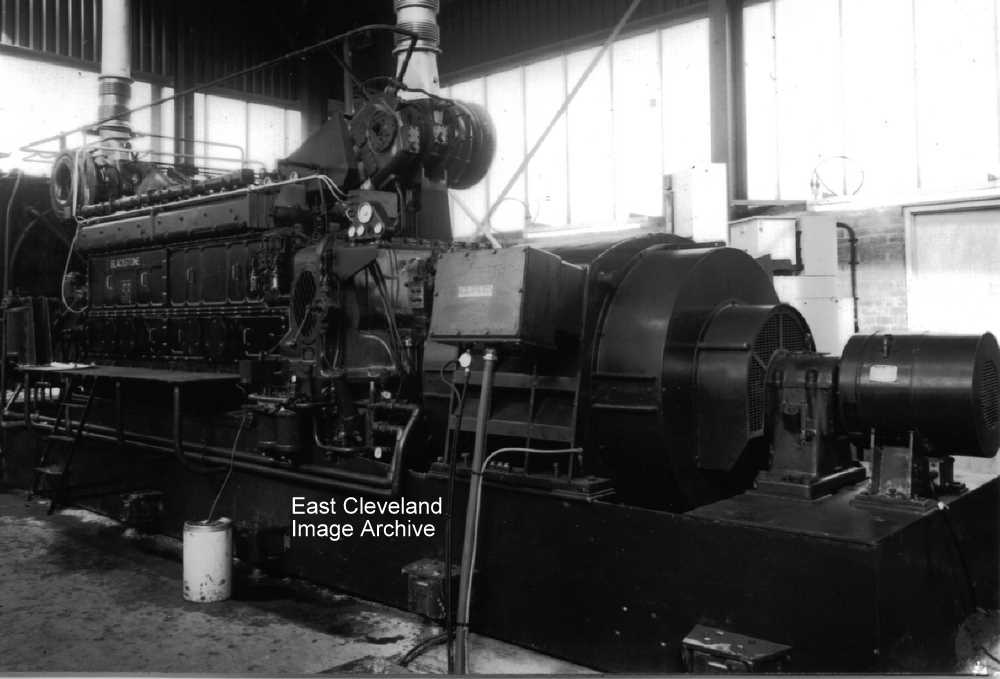
This looks like a motor-generator unit – looks pretty beefy too – please correct us if we’re wrong! Terry Robinson tells us: ”This is the Blackstone Mirlees emergency generator unit, which is situated opposite the surface engineering building.” Terry also advises: “This is the emergency generator at Boulby mine.”
Image courtesy of Alan Franks and thanks to Terry Robinson for the updates.
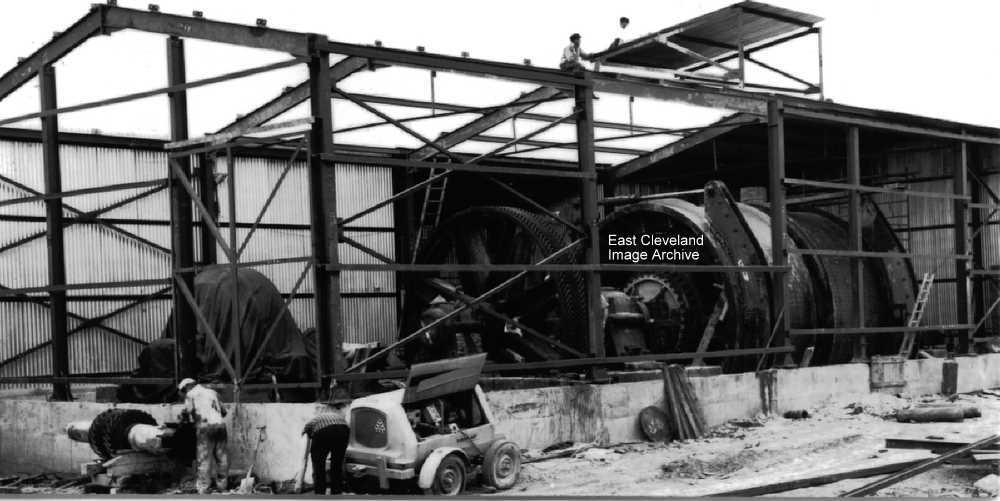
A deep shaft demands powerful haulage gear – and powerful haulage gear demands powerful brakes! – this is one of the winders used for sinking the shafts. These were later dismantled after sinking was complete.
Image and description courtesy of Alan Franks.
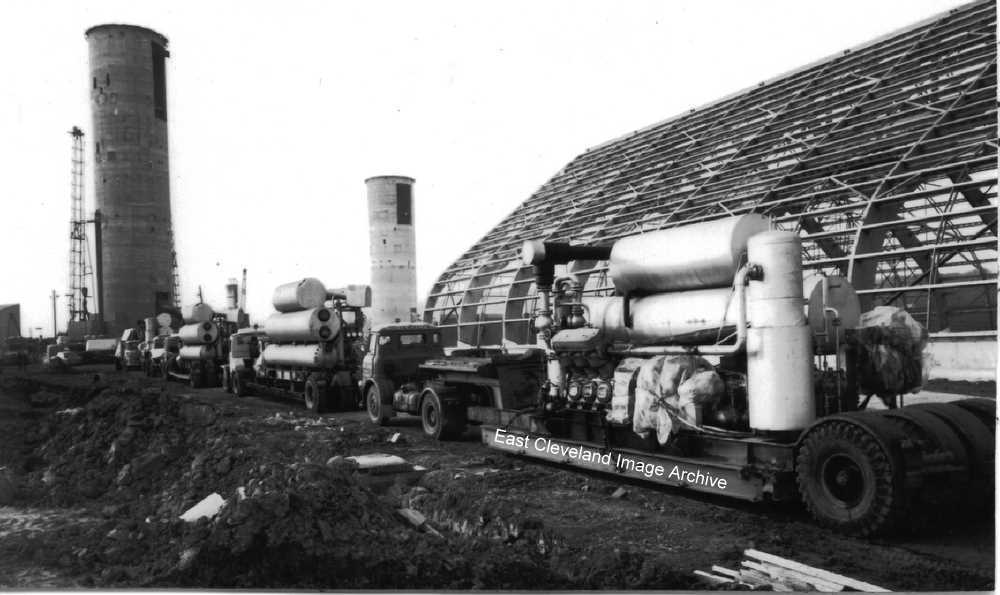
We asked of this image: “Looks like a convoy of big engines – air pumps perhaps?” Aaron Clarke tells us: ”This looks like the freezing equipment which was used in one of the shafts when the ground they were digging down through was too soft to dig through and had to be frozen.” Alan Franks tells us: ”The reason for freezing the ground was because of the amount of water in the Bunter Sandstone at approx 2000 down to 3000 feet down. This was commonly called the ice wall. This was breached while sinking through it, with loads of warm water coming into the shaft. Continuous pumping was done with Pluger pumps enclosed in metal pipes and then 30 feet of gravel and 30 feet of concrete on top. The concrete was later removed by rock breakers ( jiggers ) and hand filled into a cut down Kibble ( big bucket) .While the ice wall was refreezing during this operation the steel lining was installed by a German firm of welders, assisted by us Sinkers. The normal sinking operations recommenced after these operations. This was the Number 1 shaft ( Rock Shaft ), the other shaft Number 2 ( Man Shaft ) was long hole drilled down in stages of about 70 to 80 feet I think there were 32 holes round the shaft floor, then cement and water mix (Grout) was pumped into these holes to seal all cracks in the rock strata to contain the water as in the other shaft. The freezing did the better job of containing the water,also a different steel lining was used ( Tubbings ) these were bolted together and caulked with lead.”
Eric Lindsay tells advises: “Indeed the freeze compressors that ran 24/7 with exemption from the 3 day week electricity cuts. The freeze pipes were spiral drilled through the Bunter Sandstone from a chamber formed in the main shaft just above the sandstone. This sandstone was very permeable horizontally but the opposite vertically. The refrigerated brine was pumped down concentric pipes to provide flow and return from the manifolds in the freeze chamber. After the breach in the ice wall was found when they excavated level with it the shaft was plugged as described and the water pumped through valves. The valves were slowly turned off until all shut and the pressure built up below the plug. If I recall correctly the plug moved up that shaft a short distance. Freezing continued until ice wall hole froze over and until the full depth of shaft had been sunk and lined through the sandstone. The steel tubings came from Head Wrightson I think, in matched rings and were shot blasted on site. The segments were bolted together with lead gaskets. One ring was never paid for as they couldn’t supply me with delivery and weighbridge paper work.
On another subject, the excavated rock hauled out by Noel Carey’s trucks was very saline and the mud on the road was causing cars etc to have rust holes within a year or so. I organised undercoating on site for quite a few guys. ( probably held their cars together for a bit longer !!!
Image courtesy of Alan Franks, thanks to Aaron Clarke, Alan Franks and Eric Lindsay for the updates.
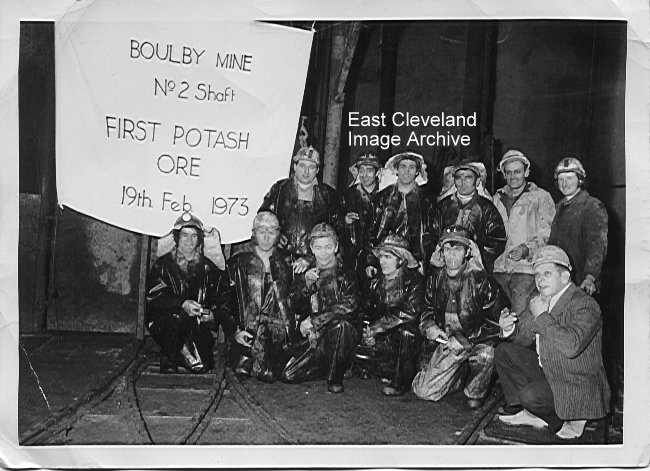
A celebratory group at the bottom of No. 2 Shaft announce the winning of the first potash from the mine on the 19th February 1973.
Back row: ??, ??, Bill Casson, Mick Urban, Alan Scott, Willy Brown.
Front row: Alan Hall, ??, Tommy Wood, ??, ??, Tommy Hornsby.
Could we have assistance with the remaining names?
Image and names to date courtesy of Alan Franks.
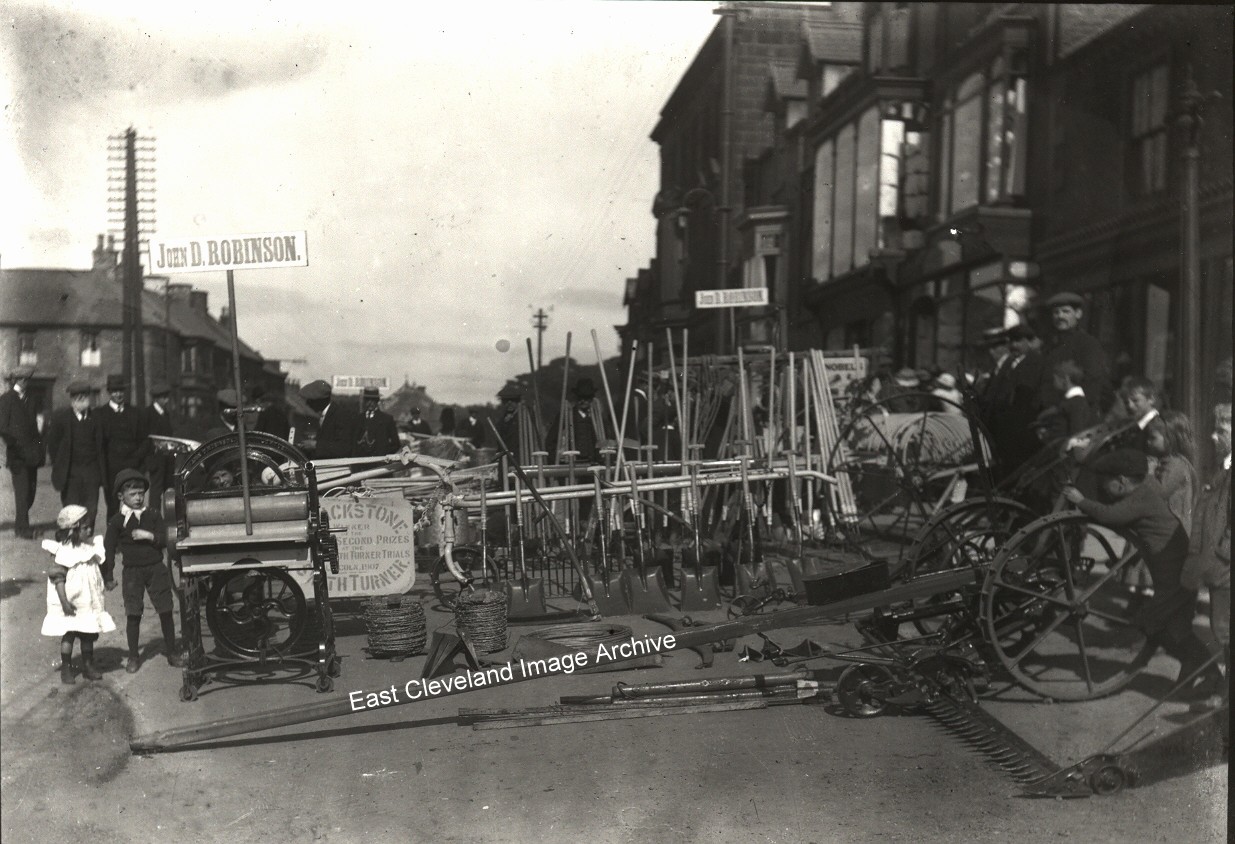
Once an integral part of community life in Loftus (and under different names every rural village in England). This would have been – as well as the place to sell your wool – one of the hiring fairs which shaped a young man’s life for the next 12 months. Now, with a brief revival in the 1980s, another attempt was made in 2013 with the intention to attempt the Fair annually. The Image Archive hopes the organisers are successful.
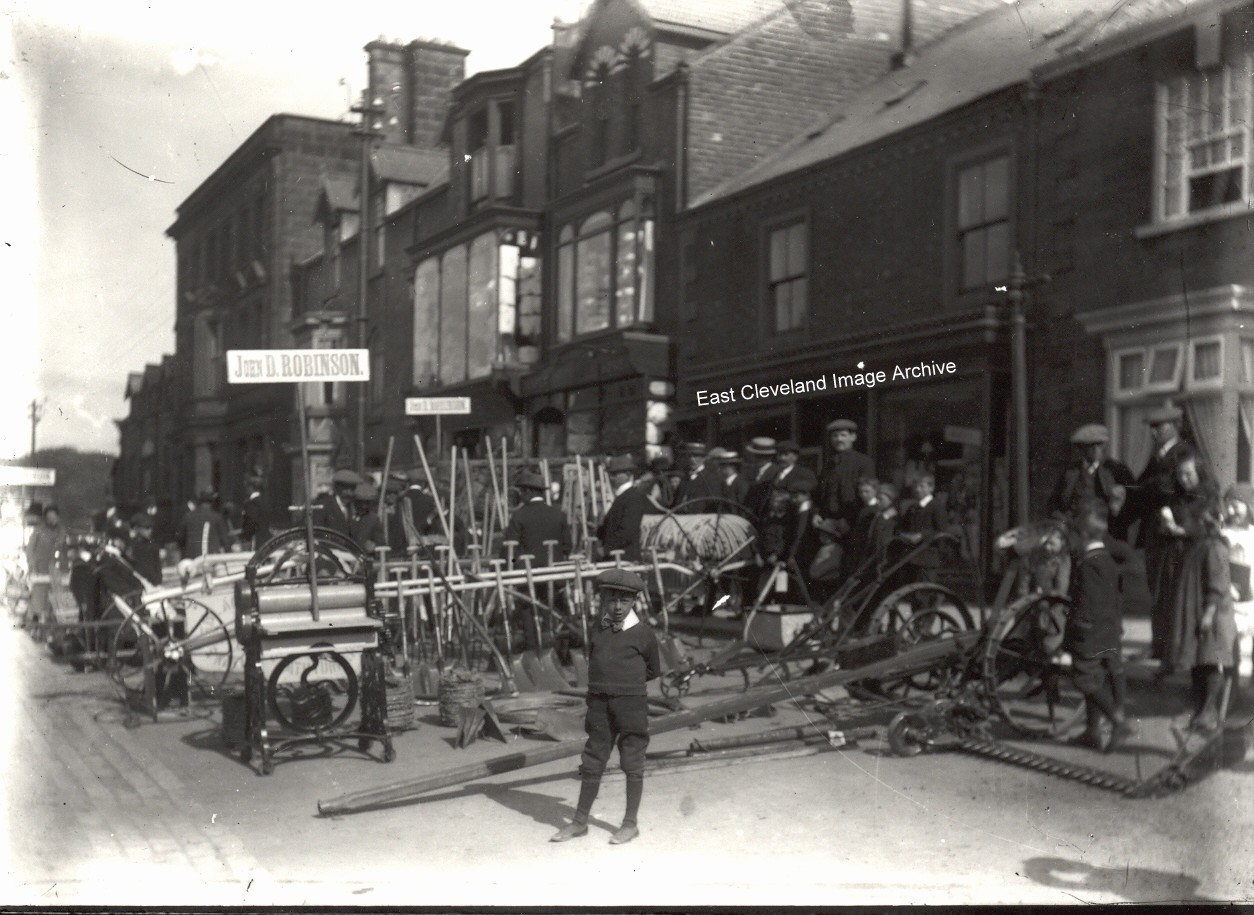
Another view of the same fair – this time with the obligatory urchin posing in the shot.
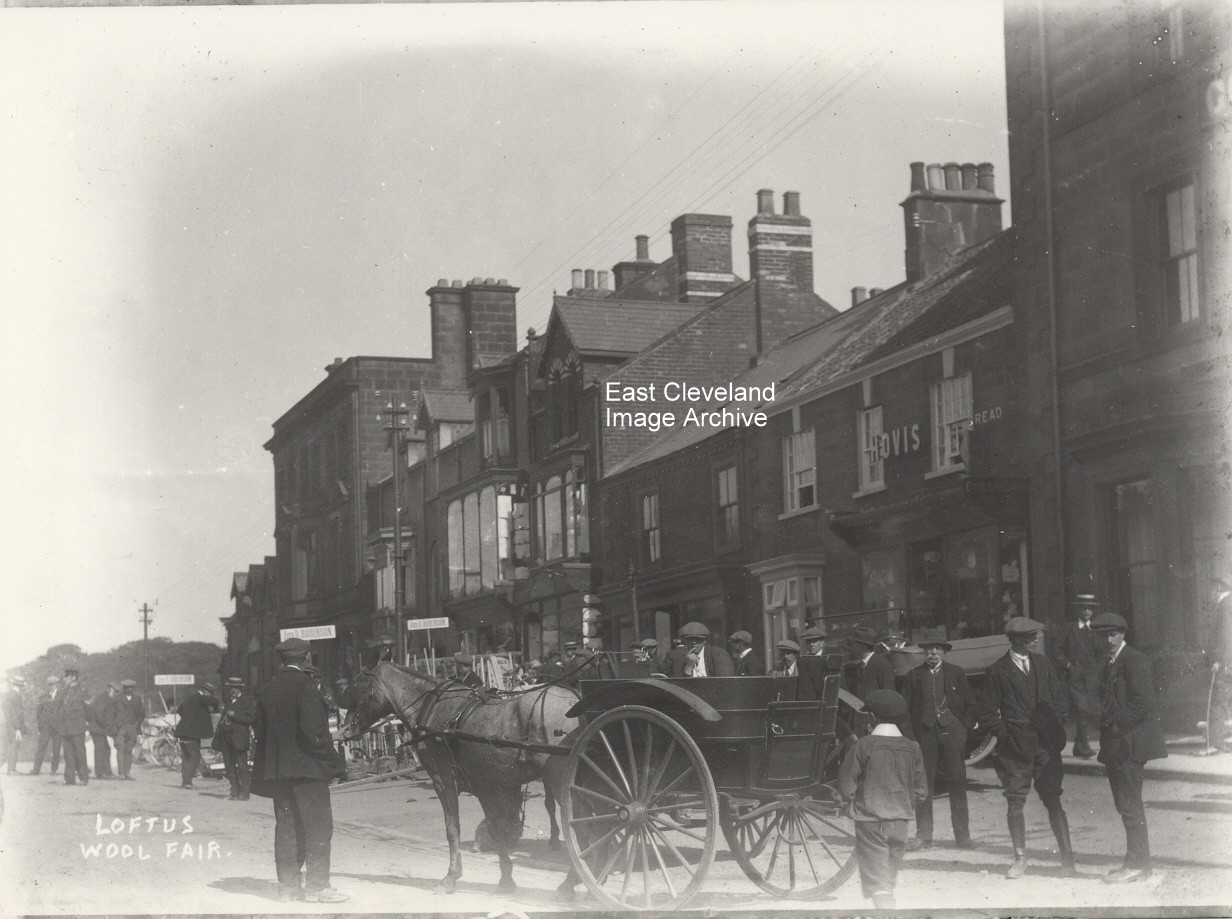
The Victoria County History – A History of the County of York North Riding: Volume 2 1923 – among the description of Loftus, includes:”A yearly wool fair is held in June.” However William White’s History and Gazetteer 1840 states: ”A market is held every Thursday, and fairs for cattle on June 24th and 25th, and on the Thursdays before May-day and Martinmas.” So although we appear to yet another image of Loftus Wool Fair – it is possible many other activities were going on at the same time, hence the variety of stalls and well dressed nature of all attending. Could this possibly include a hiring fair?
Image courtesy of Olive Bennett.
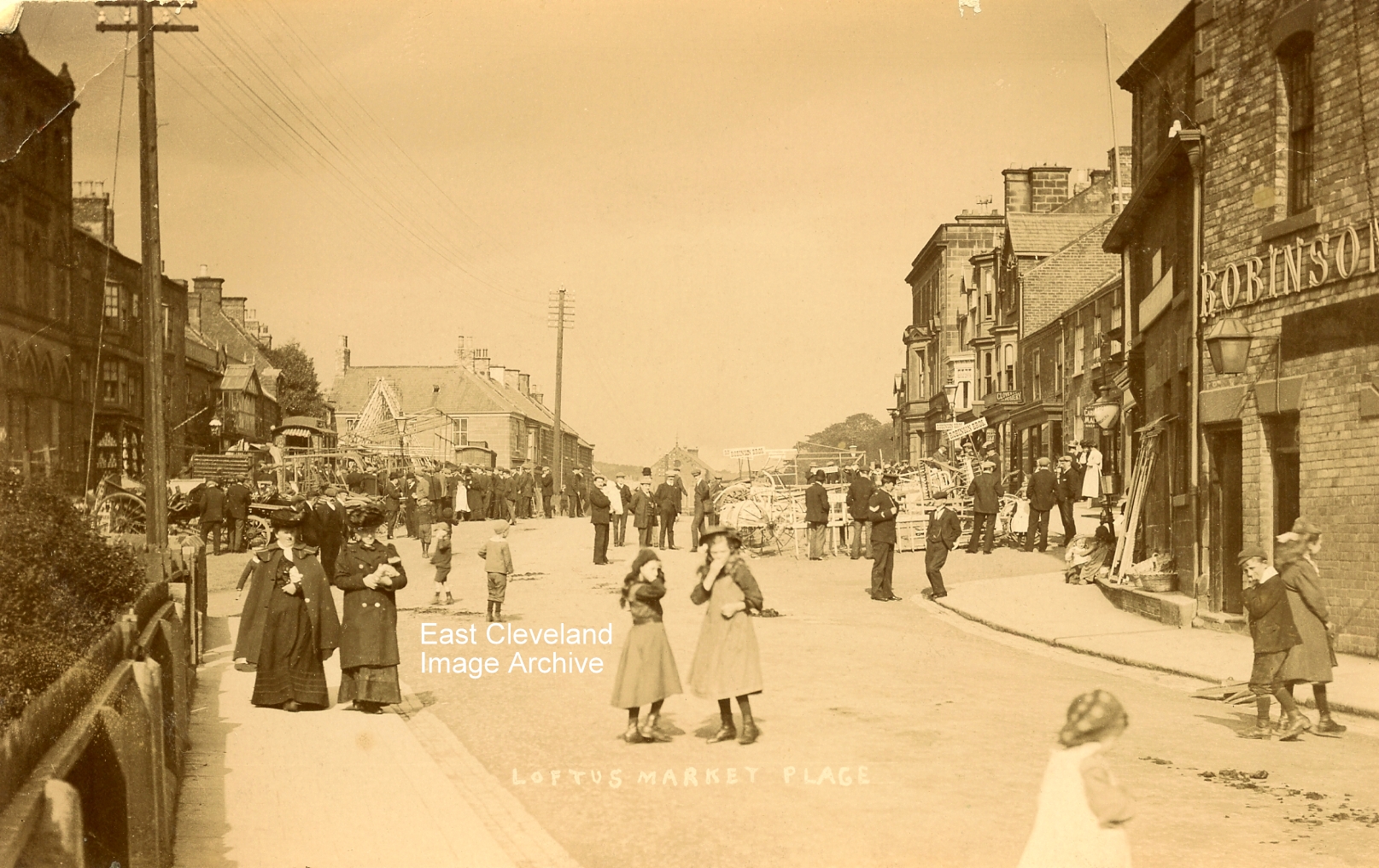
The annual Loftus Wool Fair was the greatest event of the year for the town. It was held for two days, beginning on the Friday nearest to 25th June. On that occasion families from all round the area met in Loftus to join in the activities. The fair was held until the early 1930’s. The Cleveland Village Book written by the Cleveland Federation of Women’s Institutes tells us: ”Loftus has been a market town for many years and has always provided a focal point for the outlying areas. The ancient Wool Fair continued until fairly recently, the final one being in 1938, with the advent of the Wool Board. A committee was formed to revive the Wool Fair and in 1989 a very successful attempt was made to do so, although the inherent ’wool’ of the Wool Fair was replaced by a feeling of celebration of an old market rather than the selling of the fleeces as in the old days. There is a building: situated between the present Post Office and the Town Hall which was previously the wool warehouse.”
Image courtesy of Joan Yeoman.
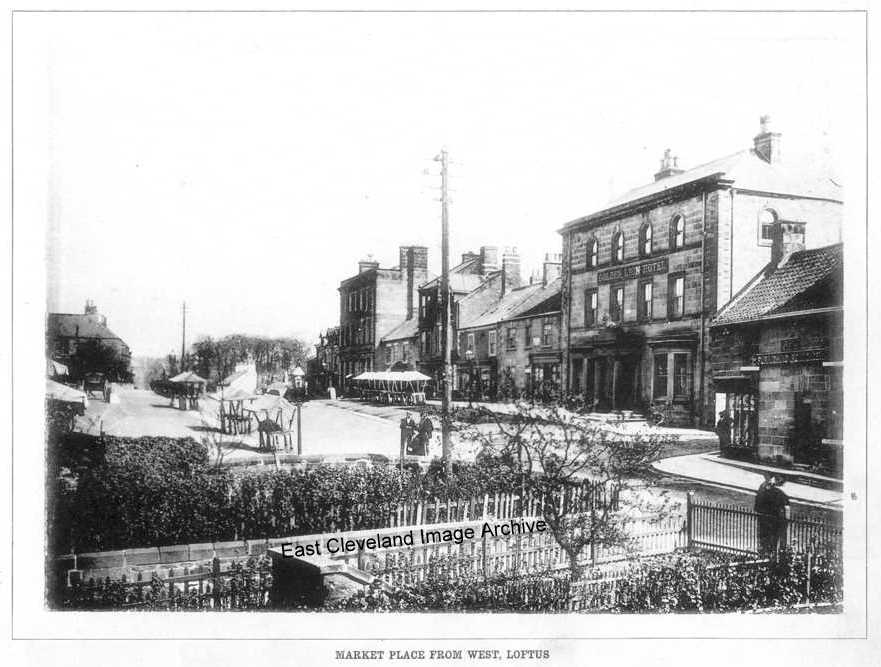
A view of the South side of the Market Place, the Market Place is obviously set out for a market or some sort of sale, with stalls on either side of the road. The image is from the book of views of Loftus; ”Cooke’s Views of Loftus and District”.
Image courtesy of John G. Hannah.
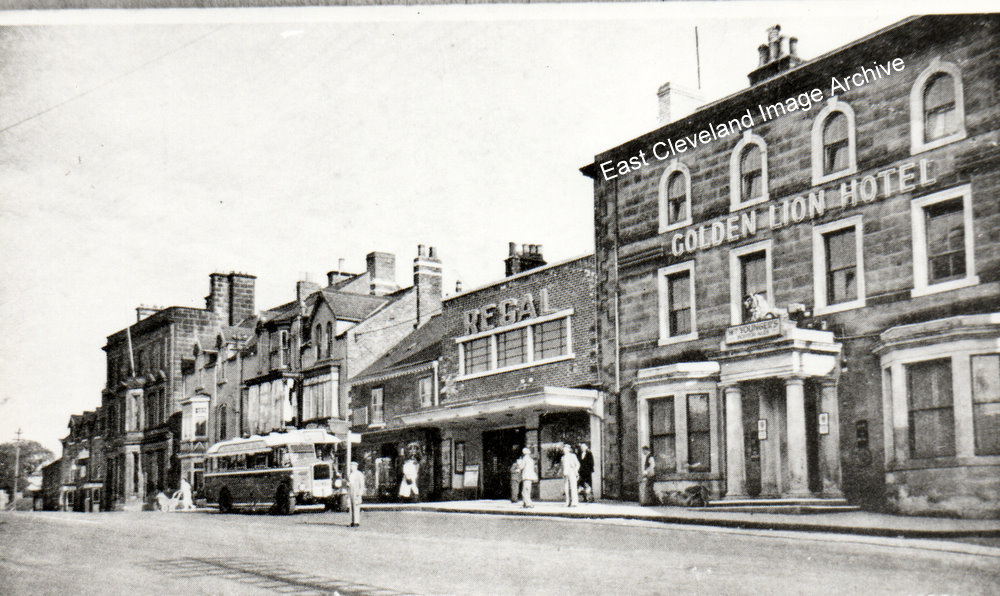
An excellent image of the Golden Lion Hotel, the Regal Cinema and we can also see the Barclay’s Bank, quite a few pedestrians about but not much traffic. Believed to date from the 1950s, the Archive would welcome assistance in dating the image?
|
|










Recent Comments